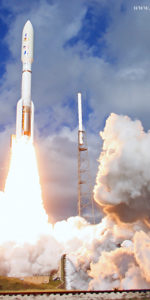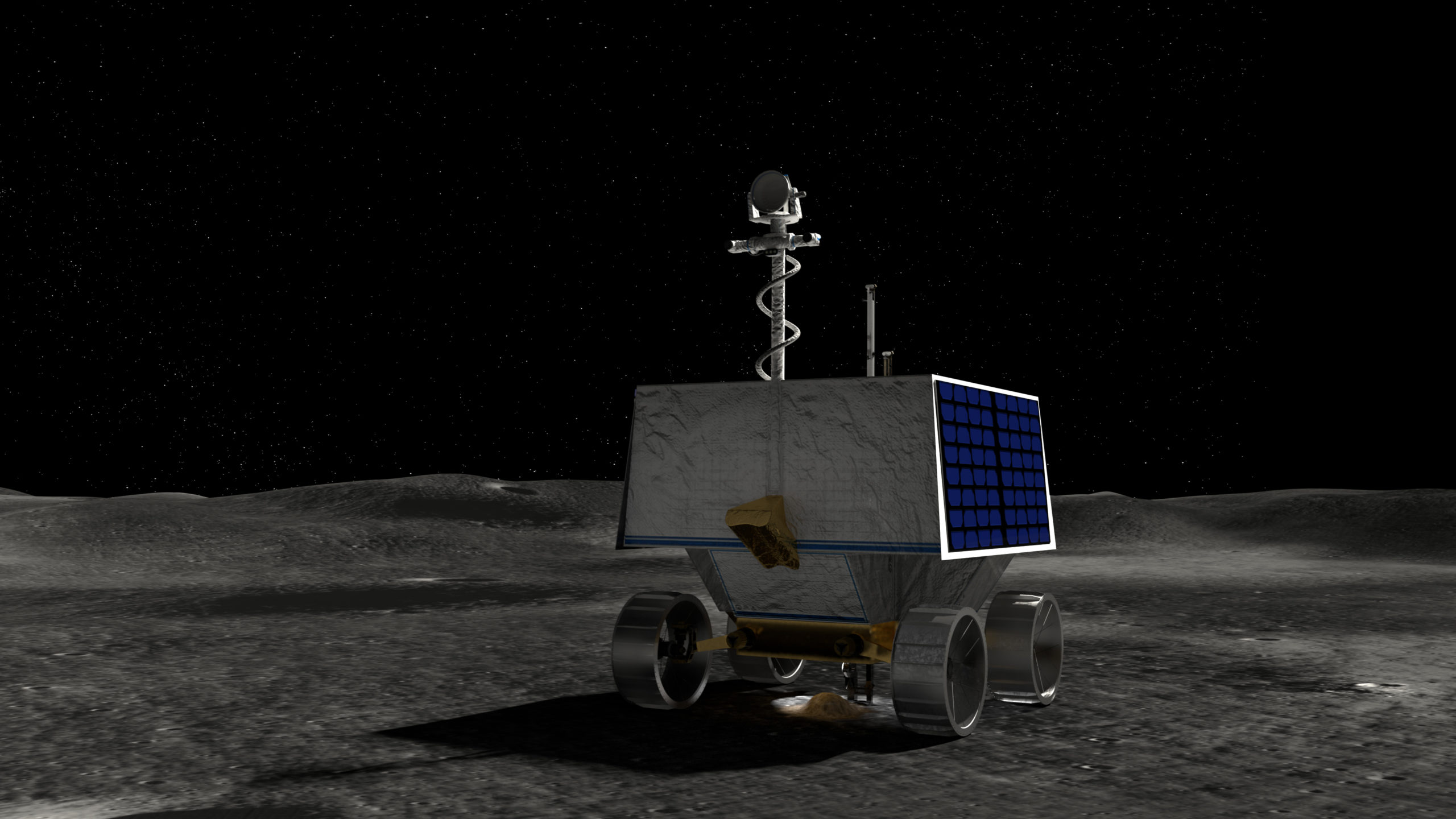
NASA has selected Astrobotic Technology, Inc., of Pittsburgh, Penn., to launch its Volatiles Investigating Polar Exploration Rover (VIPER) mission, targeted to rise from Earth in 2023 and alight on the Moon’s shadowed south pole. The $199.5 million contract will see VIPER delivered to the surface of our closest celestial neighbor aboard Astrobotic’s home-grown Griffin lander, leveraging similar design architecture from the firm’s Peregrine lander which will fly to the Moon next year. “Following the cost-saving success of Commercial Crew, NASA’s commercial partner Astrobotic will deliver the VIPER rover to the Moon’s South Pole,” tweeted NASA Administrator Jim Bridenstine on Thursday. “We will find, characterize and eventually utilize the water-ice on the Moon. VIPER will inform our human landing in 2024.”
Astrobotic’s four-legged Griffin lander provides the flexibility to house a range of rovers and other payloads to support robotic missions to the Moon, including sample-return, resource prospecting and characterization of lunar polar volatiles. It can deliver up to 1,100 pounds (500 kg) of payload to the lunar surface and uses cameras, inertial measurement units and lidar technology to guide itself to a smooth touchdown within 330 feet (100 meters) of any targeted location, even in rugged or hazardous terrain. And its framework can be customized, in VIPER’s case, to accommodate ramps to allow the rover to access the surface.
“It is an enormous honor and responsibility to be chosen by NASA to deliver this mission of national importance,” said Astrobotic CEO John Thornton in a Thursday news release. “Astrobotic’s lunar logistics services were created to open a new era on the Moon. Delivering VIPER to look for water and setting the stage for the first human crew since Apollo embodies our mission as a company.”
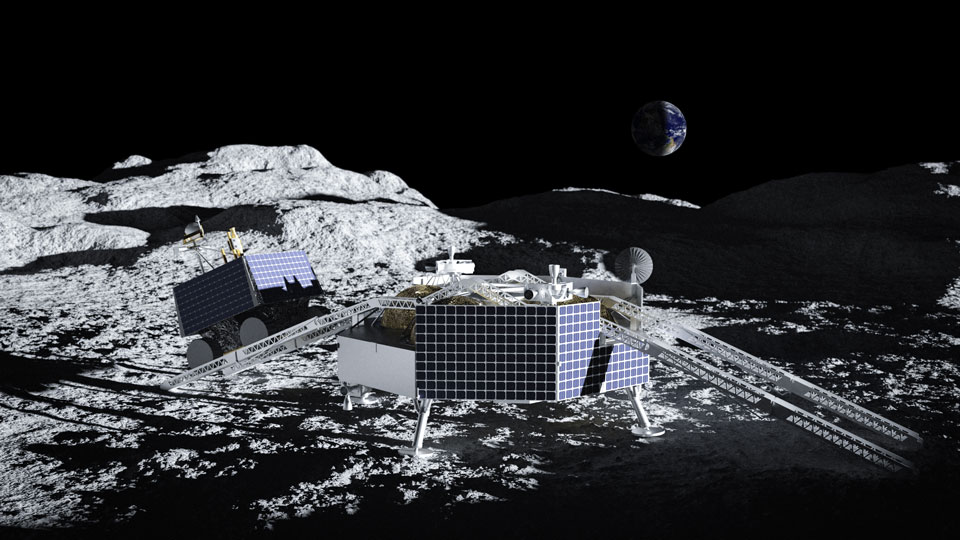
Designed by NASA’s Johnson Space Center (JSC) in Houston, Texas, and developed from elements of the now-canceled Resource Prospector, the golf-cart-sized VIPER will spend up to 100 Earth-days on the surface and travel several miles across the desolate polar terrain, gathering data on different lunar soils affected by various lighting and temperature levels. It will examine the distribution, depth and purity of potential water-ice deposits as part of early efforts to characterize the nature of the south pole before humans venture there in four years’ time.
The four-wheeled VIPER arose two years as a follow-on concept from NASA’s now-canceled Resource Prospector polar rover mission. In fact, its drill and two scientific instruments—the Neutron Spectrometer System (NSS) and Near-Infrared Volatiles Spectrometer System (NIRVSS), both developed by NASA’s Ames Research Center of Mountain View, Calif., with industrial collaboration from Lockheed Martin Advanced Technology Center in Palo Alto, Calif., and the Brimrose Corp. in Sparks, Md.—were earmarked for Resource Prospector. Originally slated to fly in 2022, this mission was canceled by NASA Administrator Jim Bridenstine in April 2018 as part of a broad realignment of the agency’s exploration goals in line with Space Policy Directive-1, which aims to put the next humans on the lunar surface by 2024.
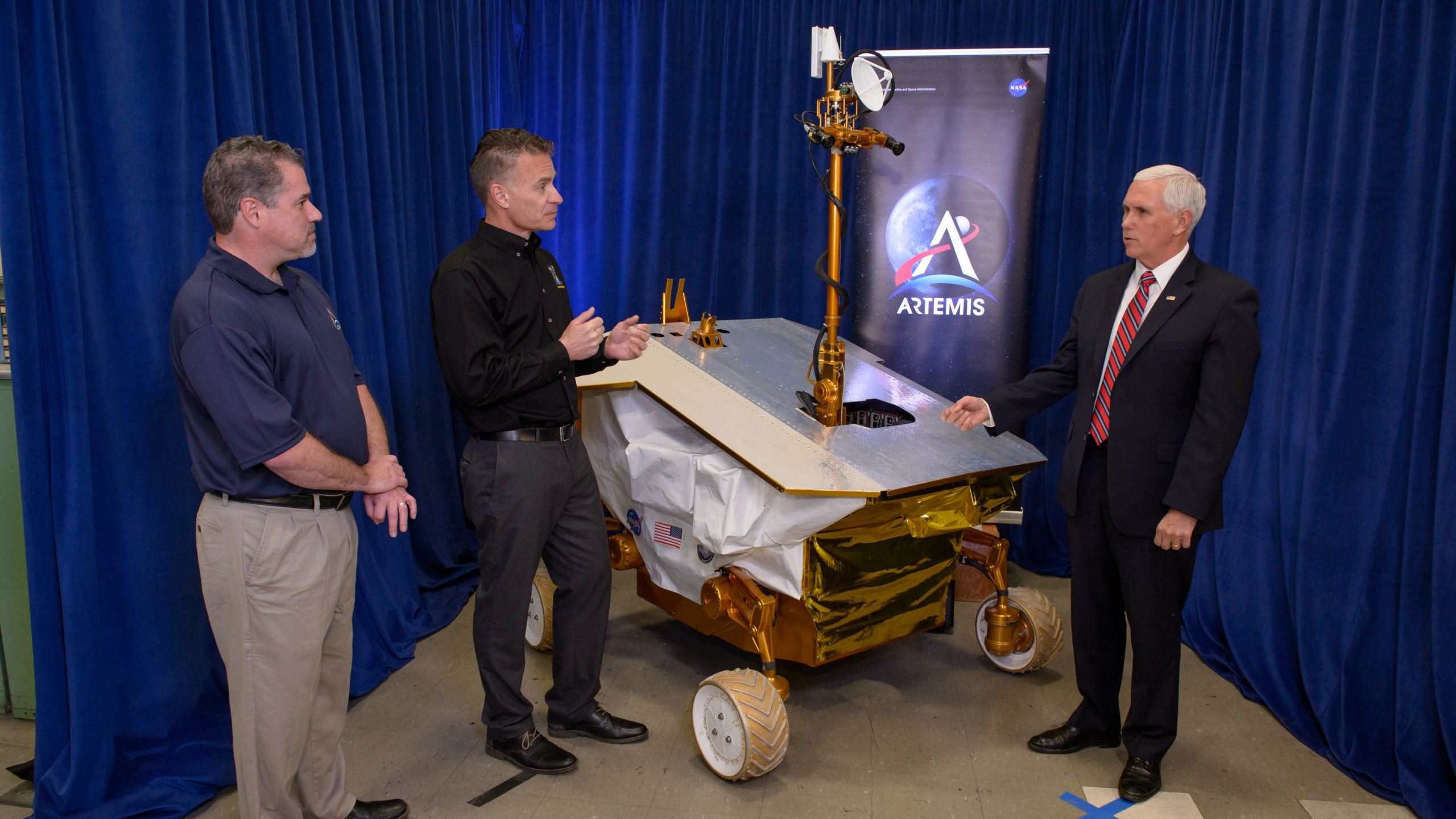
In canceling Resource Prospector as a standalone mission, NASA noted that it was “too limited in scope” for Space Policy Directive-1’s expanded lunar exploration focus but stressed that parts of it would evolve “to fit into its broader exploration strategy”. Accordingly, in May 2018 NASA unveiled the ten-year, $2.6 billion Commercial Lunar Payload Services (CLPS) initiative to reduce costs, accelerate a robotic return to the Moon and promote commercial innovation and growth for a lunar economy.
CLPS arose as a means of contracting “end-to-end” transportation services from commercial entities to send small robotic landers and rovers to the lunar south pole to scout for resources, including evidence of water-ice, preparatory to human missions. Additional goals included technology evaluations for In-Situ Resource Utilization (ISRU) and lunar science investigations.
In November 2018, the first nine CLPS companies were selected. They were Astrobotic Technology, Inc., of Pittsburgh, Penn.; Deep Space Systems of Littleton, Colo.; Draper of Cambridge, Mass.; Firefly Aerospace, Inc., of Cedar Park, Texas; Intuitive Machines, LLC of Houston, Texas; Lockheed Martin Space of Littleton, Colo.; Masten Space Systems, Inc., of Mojave, Calif.; Moon Express of Cape Canaveral, Fla.; and OrbitBeyond of Edison, N.J. And last November, a further five companies were added to the CLPS contract. Blue Origin of Kent, Wash.; Ceres Robotics of Palo Alto, Calif.; Sierra Nevada Corp. of Louisville, Colo.; SpaceX of Hawthorne, Calif.; and Tyvak Nano-Satellite Systems, Inc., of Irvine, Calif., are now eligible to bid for future CLPS missions.
In the meantime, in February 2019, the first 12 CLPS instruments and technology demonstrations were selected. Among them were three resource-prospecting instruments, including NSS, which is being developed jointly between NASA-Ames and Lockheed Martin, and NIRVSS, another Ames project with collaboration from the Brimrose Corp. Last October, it was confirmed that both instruments would fly aboard VIPER, with delivery to the lunar surface targeted for December 2022. Earlier this year, NASA finalized the design of 16 scientific instruments for the Artemis program, which included not only NSS and NIRVSS, but also a third instrument for VIPER, the Mass Spectrometer Observing Lunar Operations (MSolo), developed by the agency’s Kennedy Space Center in Florida.
NSS will investigate the presence of hydrogen-bearing materials at the landing site and determine the bulk composition of the lunar regolith. By identifying potential “wet” areas beneath the surface, it will allow the rover to zero-in on suitable drilling locations. When such a location has been reached, VIPER will halt and deploy a 3.3-foot-long (1-meter) drill known as The Regolith and Ice Drill for Exploring New Terrain (TRIDENT) to gather core samples. The drill is being provided by Honeybee Robotics of Brooklyn, N.Y. Those samples will then be analyzed in-situ by NIRVSS and MSolo.
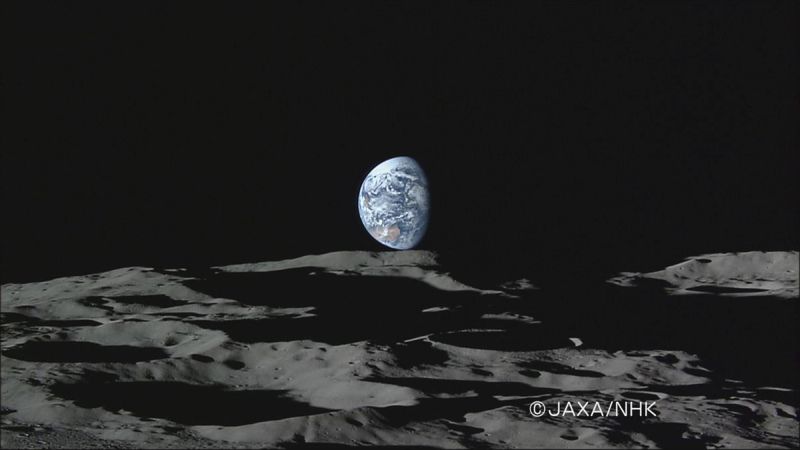
To achieve these ends, NIRVSS will examine the composition of minerals and volatiles, measure surface and subsurface hydration, carbon dioxide, ammonia and methane and map surface temperature changes at the landing site. Its spectrometer context imager will provide a broad-spectrum imaging of the lunar soil in fine resolution, whilst its long-wave calibration sensor will afford surface temperature measurements on very small scales. Last year, Brimrose Corp. reported that the spectrometer had already completed thermal-vacuum chamber tests at NASA’s Glenn Research Center in Cleveland, Ohio, during which it operated in lunar-like conditions and monitored drill cuttings from H2O-doped lunar simulants for water-ice. Meanwhile, MSolo will determine mineral/volatile composition of the core samples and elucidate their chemical constituents.
Although large bodies of liquid water are not present on the Moon, it has been theorized for several decades that water-ice could thrive in permanently or semi-permanently shadowed craters at the lunar poles. As early as the late 1970s, the Luna-24 spacecraft found that subsurface materials from Mare Crisium contained 0.1 percent of water by mass and “bistatic radar” experiments involving the Clementine probe in 1994 proved consistent with the presence of ice at the south pole. Subsequently, Lunar Prospector detected enhanced hydrogen concentrations at both the north and south poles, possibly indicative of large amounts of trapped water-ice.
Observations by Lunar Prospector, Cassini and Deep Impact afforded inconclusive results, although more recent evidence from NASA’s Moon Mineralogy Mapper aboard India’s Chandrayaan-1 orbiter revealed the spectral fingerprints of hydroxyl at the poles. The deliberate impact of an Atlas V’s Centaur upper stage into the shadowed crater Cabeus at the south pole in October 2009 was watched by NASA’s Lunar Crater Observation and Sensing Satellite (LCROSS) and revealed significant amounts of hydroxyl in the ejected material. It was postulated that this could be attributable to water-bearing materials in the form of near-pure crystalline water-ice, mixed with regolith. And laser altimetry of Shackleton Crater at the south pole, acquired by NASA’s Lunar Reconnaissance Orbiter (LRO), suggested that almost a quarter of the crater’s surface might be coated with ice.
Current thinking is that potentially millions of tons of water-ice may lie within the lunar regolith. It likely arrived at the Moon over geological timescales through the regular bombardment caused by water-bearing comets, asteroids and meteoroids or was continuously produced in-situ as hydrogen ions from the solar wind impacted oxygen-bearing minarals. As noted above, water-ice is unlikely to be present in the form of thick, pure ice deposits, but rather as thin coatings on soil grains.
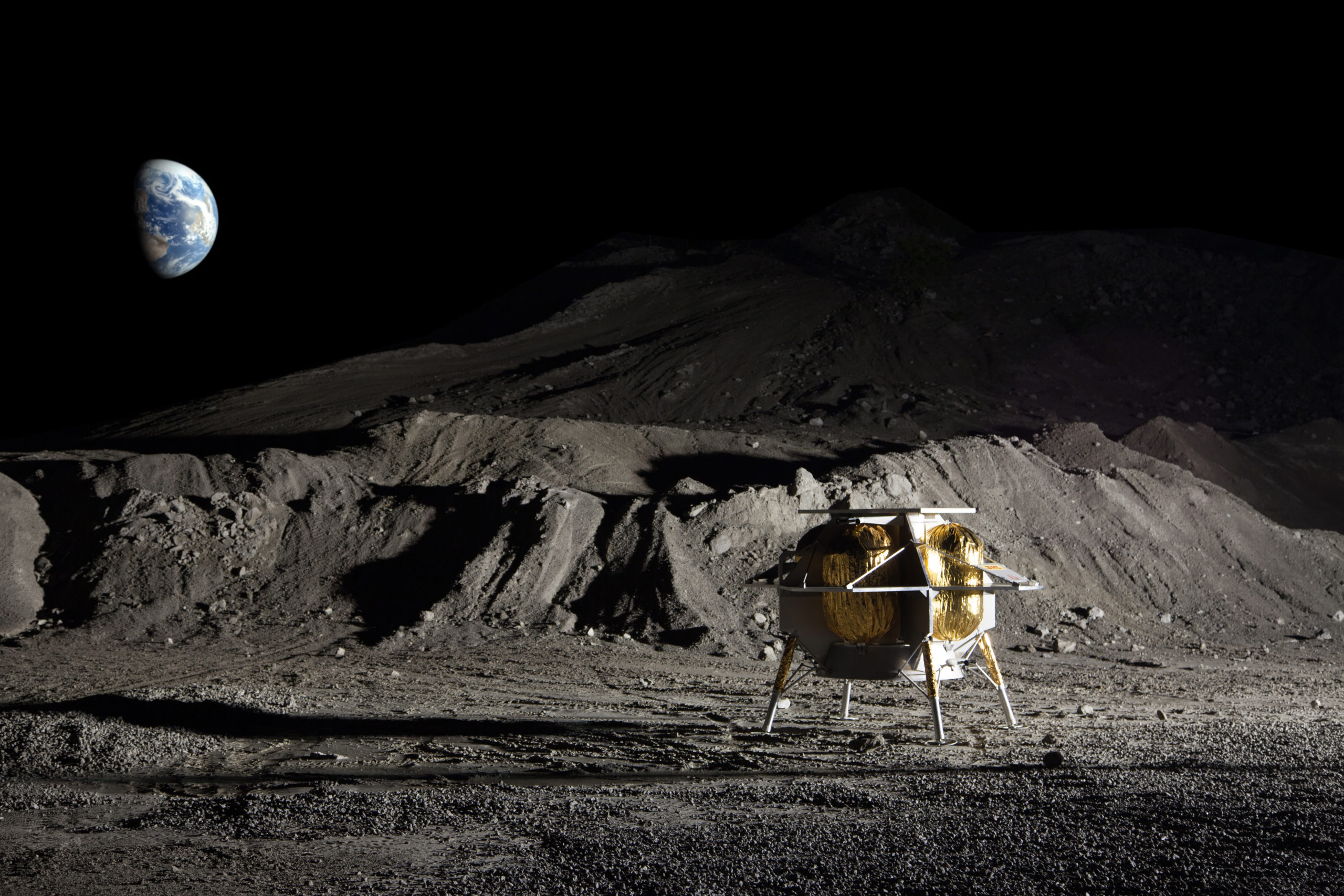
“The key to living on the Moon is water, the same as here on Earth,” said Daniel Andrews, project manager of the VIPER mission and director of engineering at NASA-Ames. “Since the confirmation of lunar water-ice ten years ago, the question now is if the Moon could really contain the amount of resources we need to live off-world. This rover will help us answer the many questions we have about where the water is, and how much there is for us to use.”
In February 2020, NASA opened up bidding from its 14 CLPS partners to deliver VIPER to the Moon, with the launch moved to 2023. Today’s selection of Astrobotic to launch the rover now raises to four the total number of CLPS-contracted missions that are formally on NASA’s books for launch in the next two years alone.
It is also the second CLPS mission assigned to Astrobotic. Last May, Astrobotic was awarded $79.5 million to develop the Peregrine lunar lander, which will fly in 2021 aboard the maiden voyage of United Launch Alliance’s (ULA) Vulcan heavylifter. “Griffin uses many of the same subsystems and approaches employed by the Peregrine lander, which will fly two years before VIPER,” Astrobotic noted in its news release on Thursday. “Both lander product lines put a heavy emphasis on safe and reliable delivery of customer payloads to the Moon.”
And Intuitive Machines received $77 million to fly the Nova-C lunar lander atop a SpaceX Falcon 9 booster in October 2021. More recently, in April of this year, Masten was picked for a $75.9 million contract to send the XL-1 lander to the Moon in 2022.




